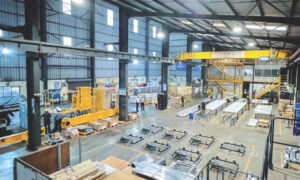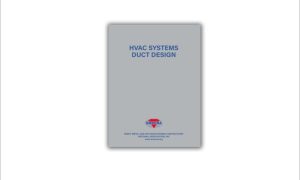Authored by- Mihir Mohanta General Manager, SCM Mother Dairy
This was announced by the finance minister in her Budget 2020-21. The objective was to help storage of perishable goods in a more efficient way. As per the proposal National Bank for Agriculture and Rural Development (NABARD) will be undertaking an exercise to geo-tag India’s cold storage facilities. As per available information, there are 8186 number of cold storages with a capacity of 374.25 Lakh MT is available in the country for storing perishable horticulture produce like fruits and vegetables. 72 percent of the storage capacity is based in just 4states of UP, WB, Punjab & Gujarat. These are also the lead states of potato production. 75 percent of the storage capacity is being utilised for potato production.
There are 3 issues linked to these cold stores:
- For Government: Inventory held by the cold store at any point of time is required to be known. Currently, there is no authentic information accessible from the stores. There is a lot of speculation in the trade circle on inventory holding. The speculation affects the demand and supply scenario leading to price fluctuations, particularly in Potato. The government therefore, invariably resorts to the use Essential Commodity Act to inspect/ limit/ raid on inventory holders.
- For a Farmer: It is difficult to locate available capacity for storage in the vicinity of his production location. For optimisation of carrying cost, the cold store needs to be in close proximity. He also needs to obtain a bankable warehouse receipt to get finance. This helps him to get rid of distressed sales and get a fair price for his produce.
- For Cold store investors: Capacity utilisation of store is a key challenge. Most of the stores operate at 60-80 percent capacity only for about 6-8 months. The majority of the cold stores are designed only for single commodity storage i.e., Potato. The viability of a cold store hinges on rentals it receives. To maximize, the storage capacity utilisation, the supply source & storage locations need to be mapped. In a usual shortfall or excess situation, a cross flow of commodities can be planned. Like in current year potatoes were mobilised from Gujarat to Agra stores.
The intent & benefit of Geo-tagging are as below:
- Geo-tagging of warehouses is a step towards repealing the Essential Commodities Act (ECA), which is considered a major stumbling block in growth of the agriculture sector.
- The ECA while penalising speculative hoarding, also ends up penalising the much desirable consumption smoothing that storage provides. The utility of the act dubious and is incompatible with the development of an integrated competitive market.
- Geo-tagging will also help the government in monitoring, financing & administering investment in this sector. It can have better control and fast-track the infrastructure creation.
- It will bring in transparency for the entire stakeholder i.e., Farmer, Cold store owners & the Government. This would ultimately benefit the consumer also.
What kinds of temperature monitoring system that is available to manage quality even in extreme climate conditions?
The 3 most common temperature sensors used with temperature monitoring systems are: thermocouples, RTDs, and thermistors. Thermocouples are the most common temperature sensors; they have the widest measurement range and are typically the least expensive but also have limited accuracy, typically ± 1-2°F (± 1°C). They are widely used where cost, simplicity and wide operating range are paramount and where extremely high accuracy is not required. RTDs have higher accuracy than a thermocouple, on the order of ±0.2 – 0.5°F (± 0.1 – 0.3°C). RTDs have a narrower operating range, with a maximum temperature of 150-600°C depending on the material and construction. They are ideal for temperature monitoring system for freezers and refrigerators Thermistors offer even more precise measurements, ± 0.1°C or better, but have a very non-linear response and therefore require a more advanced measurement system. These are most commonly used in the medical field & health care devices.
What kind of technology available to deal with wastage happening due to transportation?
Fresh F&V items are live products & they respire with intake of oxygen. However, in general lowering the temperature or reducing the oxygen availability reduces the respiration activities thereby improving life. In general, the nutrient degradation parameters are light, the concentration of oxygen, temperature and activities of water. As per the study by CIPHET (Central Institute of Post-Harvest Engineering and Technology), 16% of fruits and vegetables is being wasted every year we do not adopt the requisite post-harvest practices. The postharvest practices like pre-cooling, storage & packing materials use are all attempts to maintain the existing life of the product. MAP (Modified Atmosphere Packaging) is a kind of packages where lasers cut micropores are created in the packing material. It helps in reducing the rate of respiration. Coupled with lowering of temperature, it enhances the product life greatly. AMAP (Active Modified Atmosphere Packaging) is an advanced form of MAP packaging. These are designed as commodity specific packages. Such packs are now available in India also. The smart packages or the intelligent pack uses RFID tag & micro-chips which are embed in the packs. Some of these packs use thermal sensors which can record time & the temperature history of the products. The thermochromic inks change colour when it exceeds the tolerance limit. Such packaging would help consumer to ascertain if the product is safe for consumptions. There are commodity-specific, recommendations of temperature, humidity for storage & transportation. The function of cold stores & reefer vehicles is to maintain these as per recommendation.
Government has launched ‘Kisan Rath’ app to ensure safe transportation for perishable farm produce and essentials goods? How is it helping the industry to meet the demand and supply requirement?
The Kisan Rath mobile app was launched by the government to support farmers in Agri produce transportation. This app also facilitates traders in transportation of perishable commodities by reefer vehicles. The application was developed by the National Informatics Centre -NIC.
The app is expected to connect farmers and traders to a network of more than 5 lakh trucks and 20,000 tractors. It is meant to help farmers and traders who are searching for vehicles to move produce. This includes:
- Primary transport from the farm to the mandis, local warehouses or the collection centres of FPO (Farmer Producer Organisations).
- Secondary transport from the local mandis to intra-and inter-State mandis, processing units, railway stations, warehouses or wholesalers.
The app operates on the same principle of taxi aggregation as Ola & Uber. The consignor (farmer, FPOs, buyer/ trader) would place a requirement for transportation which will be disseminated to transport aggregators in the market, who in turn interface with truckers and fleet owners for obtaining a competitive quote. Then the quote by truckers will be passed back to the consignor. After this, the consignor will directly negotiate off- line with the trucker and finalise the deal. The consignor can also share their feedback and give ratings to the truckers on the app. The rating would help the consignors in the selection process of logistics service providers in future.
What kind of investments do you seek from the industry and the government to boost the sector’s growth in India? In India, most of the time cold chain is misunderstood as cold stores only. However, the cold chain industry comprises 3 segments i.e., first-mile connectivity (pack-houses), cold warehouses & last-mile connectivity (transportation to retailers/ consumers). Infrastructure Gap: The study by NCCD & NABARD indicates there is not much of a gap between requirement (35.3MMT) & availability (32.8MMT) in the cold storage segment, but it is high in the first & last-mile connectivity. The gap between requirement and availability of pack houses (required- 70,000 & available-250) & transportation (vehicle required- 62000 & available-10000) is high. Therefore, investments on first-mile & last mile are a priority in the context of perishable fruits & vegetables.
Disclaimer: The opinion express here are the personal and not related to any of the present or past organisation where the author worked.
Cookie Consent
We use cookies to personalize your experience. By continuing to visit this website you agree to our Terms & Conditions, Privacy Policy and Cookie Policy.















